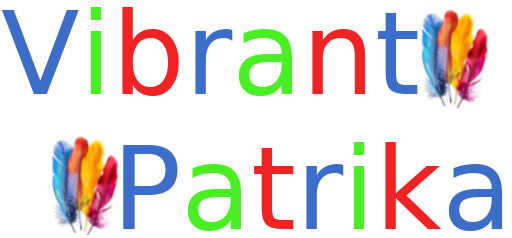Numbers are everywhere — in the spirals of a sunflower, the curve of a seashell, and even the way leaves grow on a stem. One of the most captivating numerical patterns in history is the Fibonacci sequence, a series of numbers with an almost magical presence in nature, art, architecture, and mathematics. In this article, we’ll explore what it is, how it works, its history, and why it appears in so many unexpected places.
What is the Fibonacci Sequence?
The Fibonacci sequence is a simple, yet endlessly fascinating, list of numbers where each number is the sum of the two before it. The sequence begins like this:
0, 1, 1, 2, 3, 5, 8, 13, 21, 34, 55…
Here’s the pattern:
- Start with 0 and 1.
- Add them together: 0 + 1 = 1.
- Then 1 + 1 = 2.
- Next, 1 + 2 = 3.
- Continue: 2 + 3 = 5, 3 + 5 = 8, and so on.
Mathematically, it’s expressed as:
F(n) = F(n-1) + F(n-2)
This simplicity makes it easy for anyone to understand — yet the implications are profound.
The Origin of Fibonacci’s Sequence
The sequence is named after Leonardo of Pisa, also known as Fibonacci, a mathematician born in Italy around 1170. He introduced the sequence to Western Europe in his 1202 book, Liber Abaci (The Book of Calculation).
In the book, Fibonacci posed a problem about rabbit population growth:
- Start with one pair of rabbits.
- Rabbits take one month to mature, then produce another pair each month.
- How many pairs of rabbits will there be after one year?
The solution to this problem generated the Fibonacci numbers.
While Fibonacci introduced the sequence to Europe, it had already been described in ancient Indian mathematics centuries earlier, particularly in relation to Sanskrit poetry patterns.
Fibonacci in Nature
One reason the Fibonacci sequence has captured so much attention is its frequent appearance in nature. From plants to animals, the numbers — or their related ratios — show up in surprisingly many places.
a) Sunflowers and Spiral Patterns
If you look at the seeds in the center of a sunflower, you’ll notice spiral arrangements. Typically, the number of spirals going in one direction and the number going in the opposite direction are consecutive Fibonacci numbers (like 34 and 55).
b) Pinecones and Pineapples
The scales on pinecones and the diamond shapes on pineapples also follow Fibonacci patterns, with spirals moving in two directions.
c) Seashells and the Golden Spiral
Many seashells, like the chambered nautilus, grow in a logarithmic spiral shape. While not a perfect Fibonacci spiral, the proportions often approximate it closely.
d) Leaf Arrangements
The way leaves grow around a stem (called phyllotaxis) often follows Fibonacci angles, allowing plants to maximize sunlight exposure.
The Golden Ratio Connection
The Fibonacci sequence is closely tied to the Golden Ratio (approximately 1.6180339887…). When you divide a Fibonacci number by the one before it, the ratio gets closer to the Golden Ratio as the numbers grow:
- 3 ÷ 2 = 1.5
- 5 ÷ 3 ≈ 1.666…
- 8 ÷ 5 = 1.6
- 13 ÷ 8 ≈ 1.625
- 21 ÷ 13 ≈ 1.615…
The Golden Ratio is often called the “most beautiful number in the universe” because it appears in art, architecture, and nature, creating visually pleasing proportions.
Fibonacci in Art and Architecture
The sequence and the Golden Ratio have influenced artists and architects for centuries.
a) The Parthenon
Some scholars believe the ancient Greeks used the Golden Ratio in designing the Parthenon’s façade, giving it harmonious proportions.
b) Leonardo da Vinci
Da Vinci incorporated Golden Ratio proportions into his works, including Vitruvian Man and The Last Supper.
c) Modern Design
Graphic designers and photographers often use the “Golden Spiral” (a spiral based on the Golden Ratio) to compose visually appealing layouts.
Fibonacci in Technology and Finance
Fibonacci numbers aren’t just for nature and art — they show up in modern industries too.
a) Computer Algorithms
Certain search algorithms and data structures use Fibonacci numbers for efficiency.
b) Stock Market Analysis
Some traders use “Fibonacci retracement” levels to predict price movements, though this is more art than science.
c) Music
Musical scales sometimes reflect Fibonacci relationships in rhythm and composition.
Fun Ways to Explore Fibonacci
Learning about Fibonacci doesn’t have to be purely academic — you can explore it in creative and interactive ways.
- Draw a Fibonacci spiral by making squares whose sides are Fibonacci numbers, then connecting quarter-circles.
- Look for patterns in your garden — count petals, spirals, and leaves.
- Explore Fibonacci poetry — in which syllable counts follow the sequence.
Why Does Nature Use Fibonacci?
Scientists believe the sequence appears in nature because it’s an efficient growth pattern. For example:
- Spirals in flowers help pack seeds tightly.
- Leaf arrangements maximize light capture without blocking other leaves.
- Shell spirals allow organisms to grow without changing shape.
In short, it’s nature’s way of solving practical problems elegantly.
Common Misconceptions
While Fibonacci numbers do appear widely, not every spiral or petal count is a perfect Fibonacci match. Some patterns approximate the sequence, while others are purely coincidental. It’s important to recognize the difference between genuine mathematical patterns and human tendency to see them everywhere.
The Fibonacci sequence is more than just a mathematical curiosity. It’s a bridge between math and nature, science and art. It reminds us that patterns connect seemingly unrelated things — a sunflower and a stock chart, a seashell and a cathedral.
Exploring Fibonacci can deepen your appreciation for both numbers and the world around you. Next time you’re out in nature or looking at a piece of art, see if you can spot the hidden rhythm of Fibonacci. You might be surprised at how often it shows up.

















